
Start : Marina Bas-Du-Fort (Pointe-à-Pitre/Gosier)
Phone: 06 90 59 39 00
E-Mail: julien.guidedepeche@gmail.com
Here is a non-exhaustive list of Guadeloupe fish that we meet during our fishing sessions.
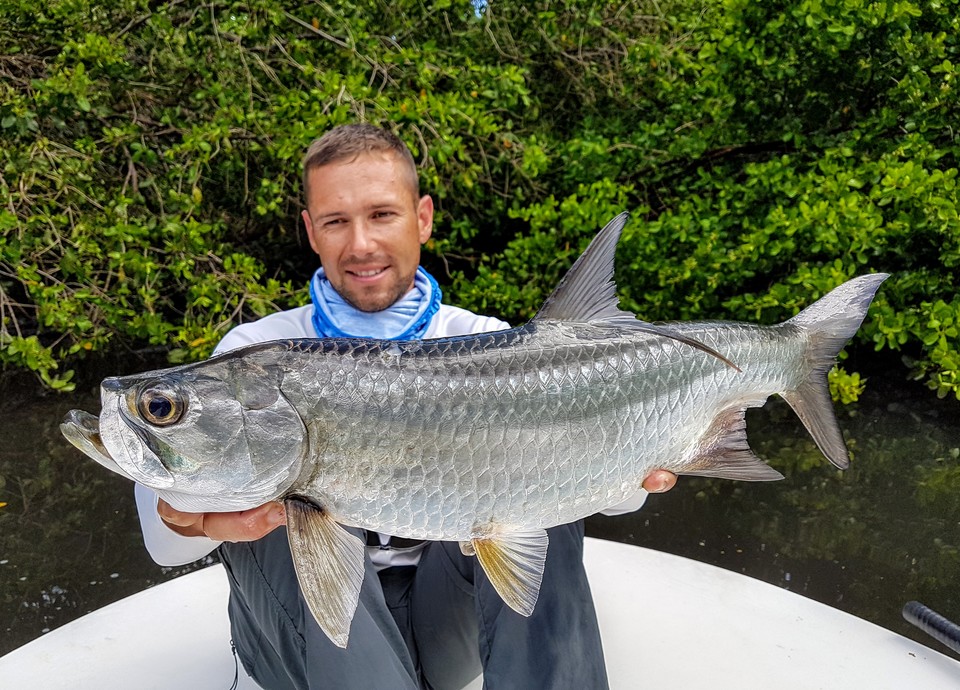
Also called ‘gran tekay’ in the French West Indies , tarpons inhabit a large range on both sides of the Atlantic. They can be found on the western Atlantic coasts (from Florida to Brazil) and throughout the Caribbean. Tarpons are also found along the eastern Atlantic coasts from Senegal to South Angola.
Megalops is highly prized and respected by fly anglers and ‘lurists’ alike. It is considered one of the greatest saltwater game fishes. Due to the hard bony structure of its mouth, hooking it and not losing it is a real challenge. Once hooked, it will jump, shake its head furiously and spare no effort to free itself.
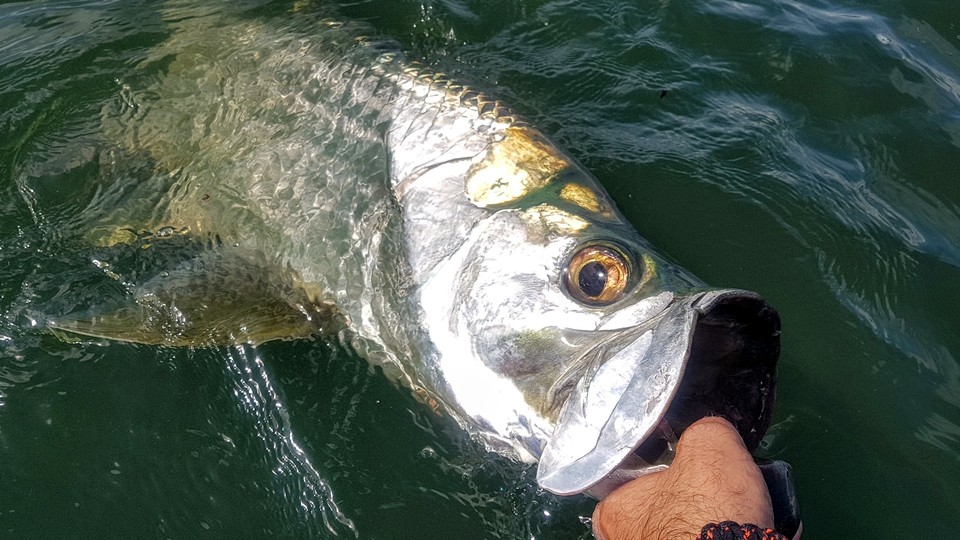
Also called the ‘silver king’ by English native speakers, adult species can weigh up to 50 pounds in Guadeloupe. ‘Baby’ tarpons are abundant year-round near the river banks under the mangrove trees or in the canals. They can be found occasionally in the lagoons.
The large silvery scales covering its body are a perfect shield for this great predator. It can tolerate oxygen-poor environments and regularly comes to the surface to breathe. It rolls on the surface (marsouine in French) and so it can be easily spotted when sight-fishing. As the following
video shows, stealthy approach, fine cast, proper lure animation and safe hooking pay off.
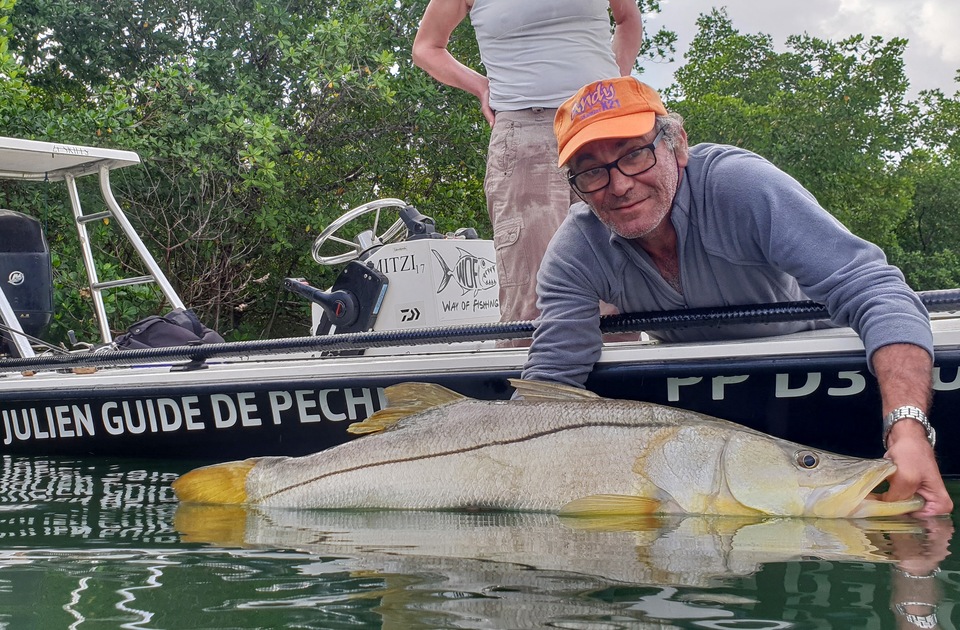
Also called ‘brochet de mer’ in Guadeloupe, snooks are abundant in tropical waters. The mangroves give shelter to this emblematic species but they can also be found off the beaches, in lagoons and harbours. The black lateral line across its body and the bright yellow pelvic and caudal fins, especially during spawn, are dintinctive features of the snook. This bottom fish is renowned for roaming for food in the sea bed. Snooks put up a great fight. That’s why they are so highly-prized by game fishers.
They are very sensitive to weather changes and so you need to be there at the right time and the right season to find them. We can track them down not far the shore (watch the (vidéo) or in deeper water ‘scratching’ the bottom with our lure. Snooks can reach good sizes in Guadeloupe. Average length varies from 1 ft 6 in to 2 ft 3 in but we often land specimen fish of 3 ft. The record on the ‘Julien guide pêche’ (my boat) is 3 ft 6 in !
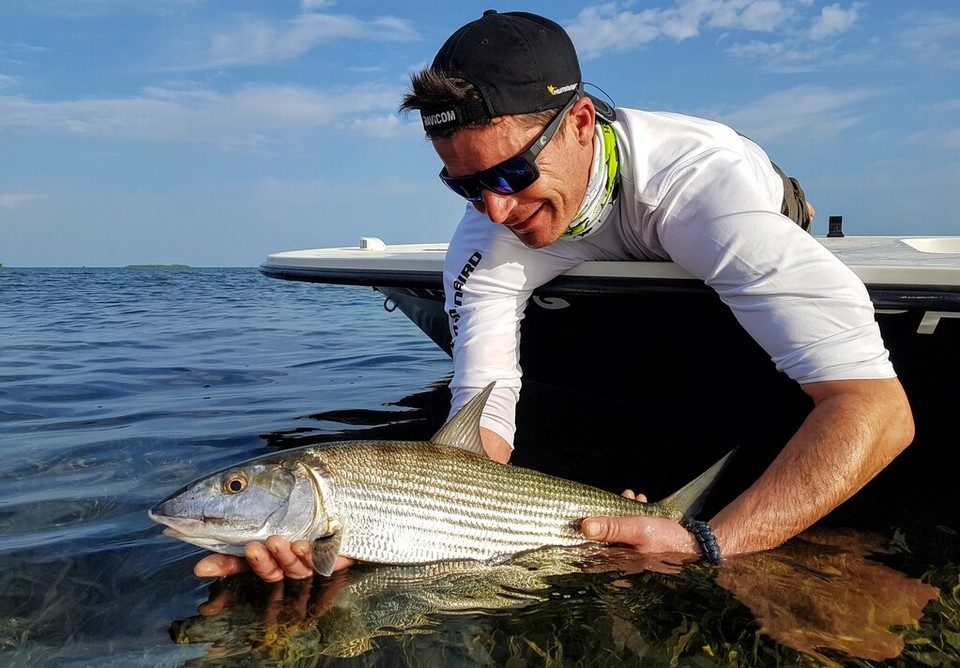
This splendid fish with its bright silver scales lives inshore in tropical waters. It is mostly found in schools of fish. It reigns over the flats and roams in these waters to feed on little fish and crustaceans. That’s where we’ll track them down on my Mitzi Skiff. This flat-bottomed boat is suitable for sight-fishing on the flats as it poles quietly without scaring the fish. This elusive ‘grey ghost’ is very difficult to spot even in crystal-clear waters. It is also easily spooked.
On board, all eyes must remain alert for ‘tailing’ (when their transparent caudal fin pokes above the waterline as they troll nose-down for shrimp). This great fighter will sizzle a hell of a line on the first run ; So watch out ! You can also fish for it in deeper waters, ‘scratching’ a soft lure or a light jig at the bottom. Again watch out as they will put up a great fight ! (see videos of bonefish on lures or flies)
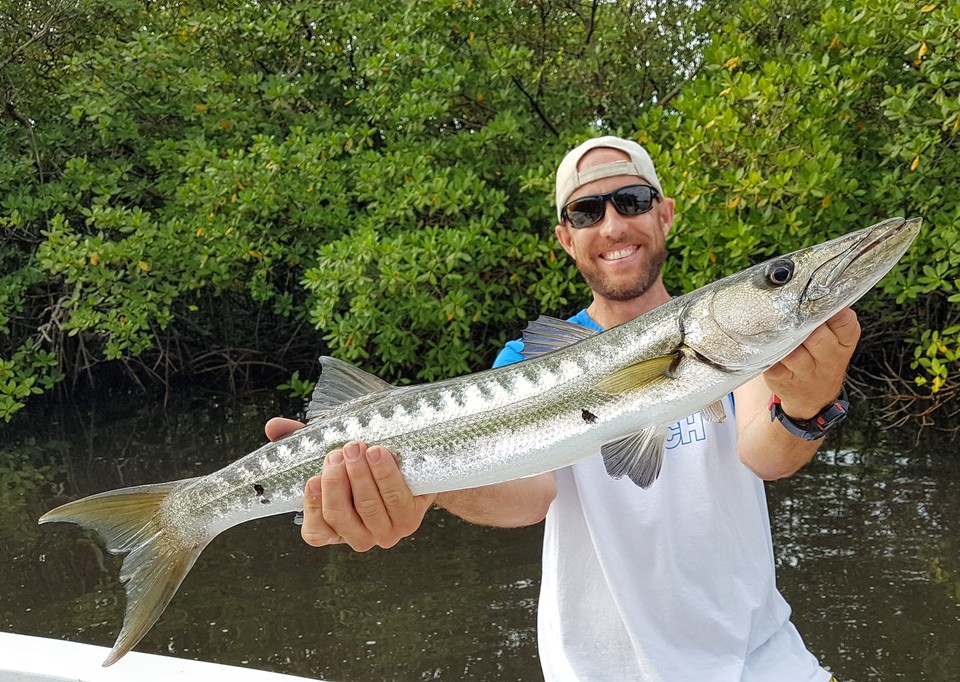
We are lucky enough to have the largest barracuda species (the great barracuda) in the Caribbean. This merciless, voracious predator is the king of the lagoon and the mangroves. It lurks around the flats and near the mangrove tree roots as food is abundant there. Barracudas are very powerful fast fish and so you should have a tight grip on the rod. Our swim-baits are rarely left unharmed when they attack them. They are voracious enough to attack the fish at the end of your line when they’re not invited. Needless to say a 3ft long barracuda hooked on a surface lure is real sport.
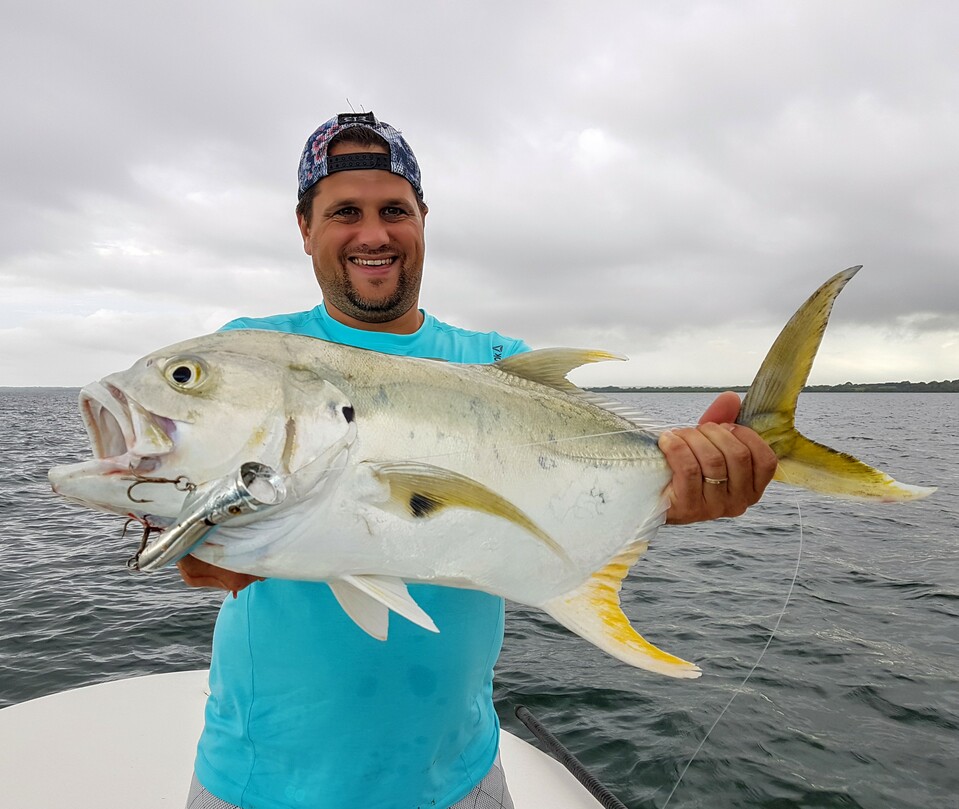
It can be found in all the warm temperate waters on the globe. The carangidae are a family of fish. In Guadeloupe, there’s a great variety of species : jacks (caranx hippos), big-eye jacks (caranx latus), carangue franche (caranx ruber), carangue lune (selene vomer), carangue à plumes (alectis ciliaris) among others. They are fast-swimming fish that will put up a great fight and they are highly-prized by game fishers. Most of the time, they are found in schools of fish. Watching a school of jacks chasing their preys near the surface is really spectacular. They can be found in nearly every sort of environmment. Every technique works equally well to catch them. An example in this video.
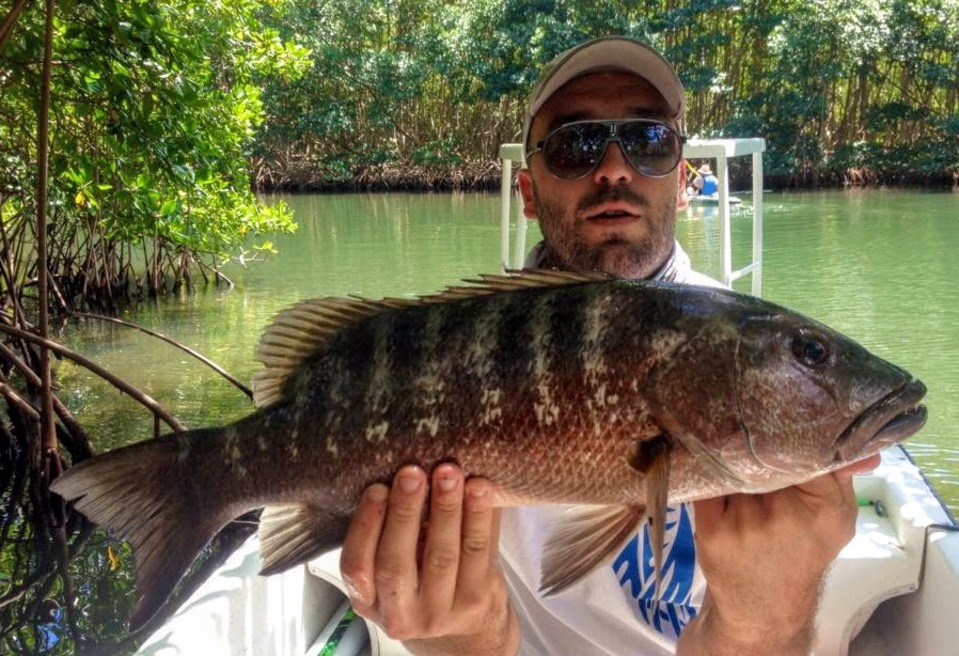
They are bottom fish. There’s a wide variety of dentex in the Caribbean. Colours differ from one species to another. The most widely spread here are mutton snappers, mangrove snappers. dogtooth dentex (lutjanus jocu) and yellow dentex. They are powerful fighters. In a split-second, a mutton snapper hooked near a rocky bottom will always try to go back to its hiding place. So, you have to be alert when it strikes. When targetting this fish, bottom-fishing (‘scratching the seabed’) and jigging are the most efficient techniques. They can also be caught on surface lures or swimbaits near the flats sometimes. The mangrove snapper lives among the mangrove tree roots and once it’s grabbed your lures, it will spare no effort to go back where it was hiding. Once again, you must show who’s the boss and a good drag is necessary if you don’t want to lose the fish.
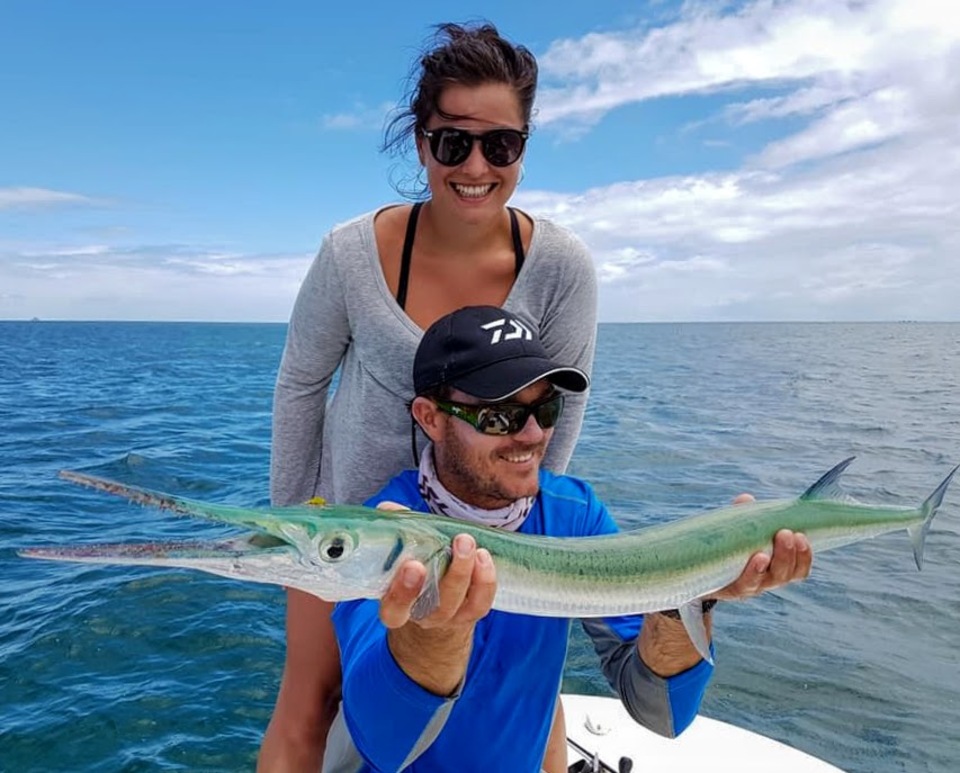
This long and slender fish looks like an eel. Its jaws are elongated and armed with sharp teeth. So, steel leaders are strongly recommended. Garfish live close to the water surface. They are voracious and reflex surface strikes are not uncommon. They can reach impressive sizes in our waters. Our record on the ‘Julien guide pêche’ (my boat) is a ‘crocodile’ garfish (tylosurus crcodilus) that was 4 ft 4 in long !
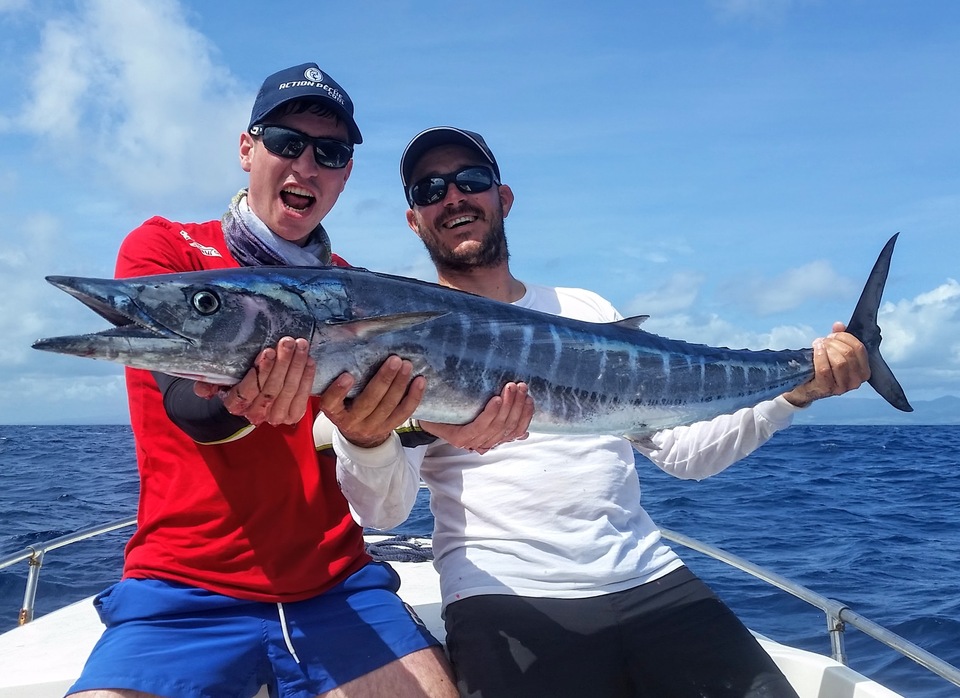
Spanish mackerels, kingfish, ceros and wahoos all belong to the mackerel species and they can all be found in Guadeloupe. The wahoos are one of the fastest gamefish. Their top speed is utterly amazing and they are famous for jumping up to 6 feet above the surface when they are hooked. They are dreadful predators with razor-sharp teeth. That’s why you’ve got to be very careful when you land them. Most of the time time, they can be found offshore but we can fish for ceros (the white ones) and the Spanish mackerel in the lagoons. The most rewarding technique to catch them is probably jigging but they can be caught while trolling or casting too. The reel is bound to sizzle on the first run. So, watch out !
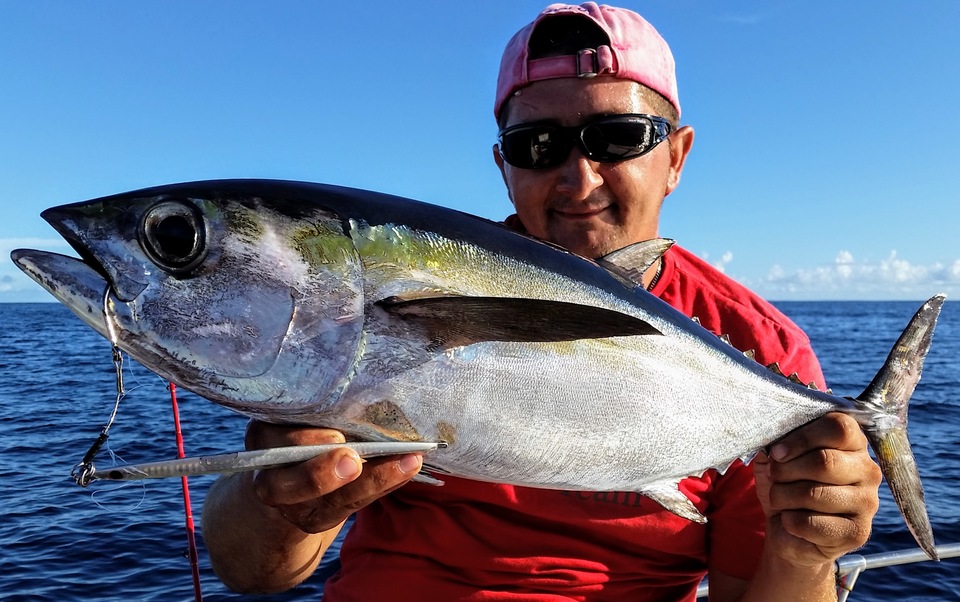
They are highly-prized by game fishers or big game fishers as their power/weight ratio is second to none. There’s several tuna species in Guadeloupe. The skipjack is the smallest one. Skipjacks gather in schools behind the coral barrier where they lurk for prey. They can also be found in the lagoons. Guadeloupe is also home for black tuna. They are quite small and also hunt in schools of fish off the island. Yellow tuna is the heaviest fish of the tuna species. It can be fished for even further away in the open sea, especially near the fish-aggregating devices (DCP).
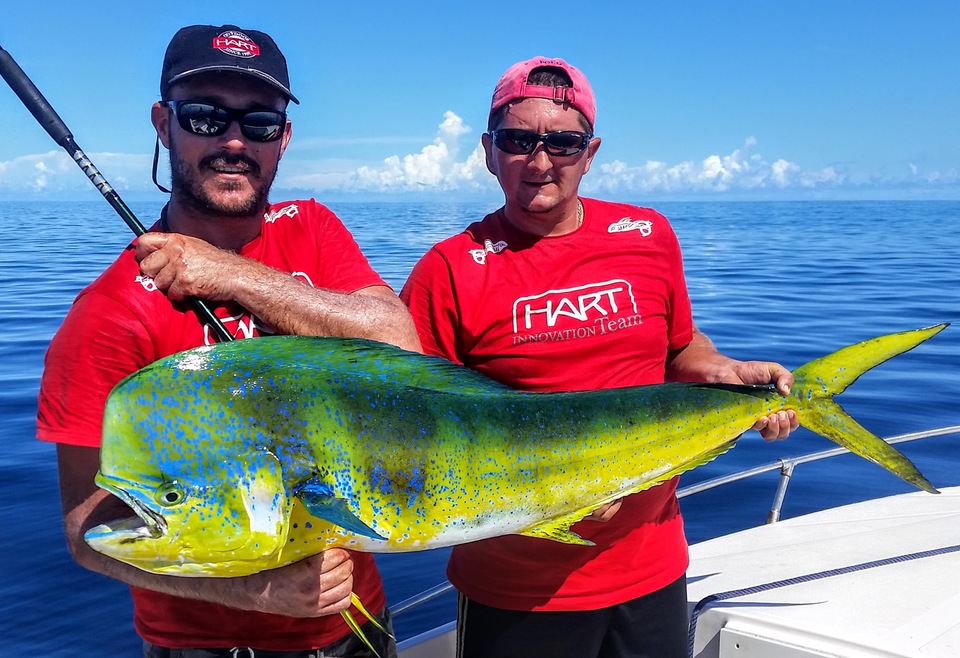
This marvellous species cand be found in all the tropical and subtropical waters and even in the Mediterranean. They are distinguished by dazzling colors –golden on the sides, and bright blues and greens on the sides and back. They are found in schools in the open sea and stay close to the surface. Dolphin fish are attracted to floating debris of all sorts and sargassum, a floating brown algae that serves as both a hiding place and a source of food. They can also be found near fish-aggregating devices (DCP). As they are fast growing and have a delicate flesh, dolphinfish are consumed and fished extensively. You can troll or cast or even jig to catch them. They are challenging adversaries renowned for their top speed runs and fabulous jumps.
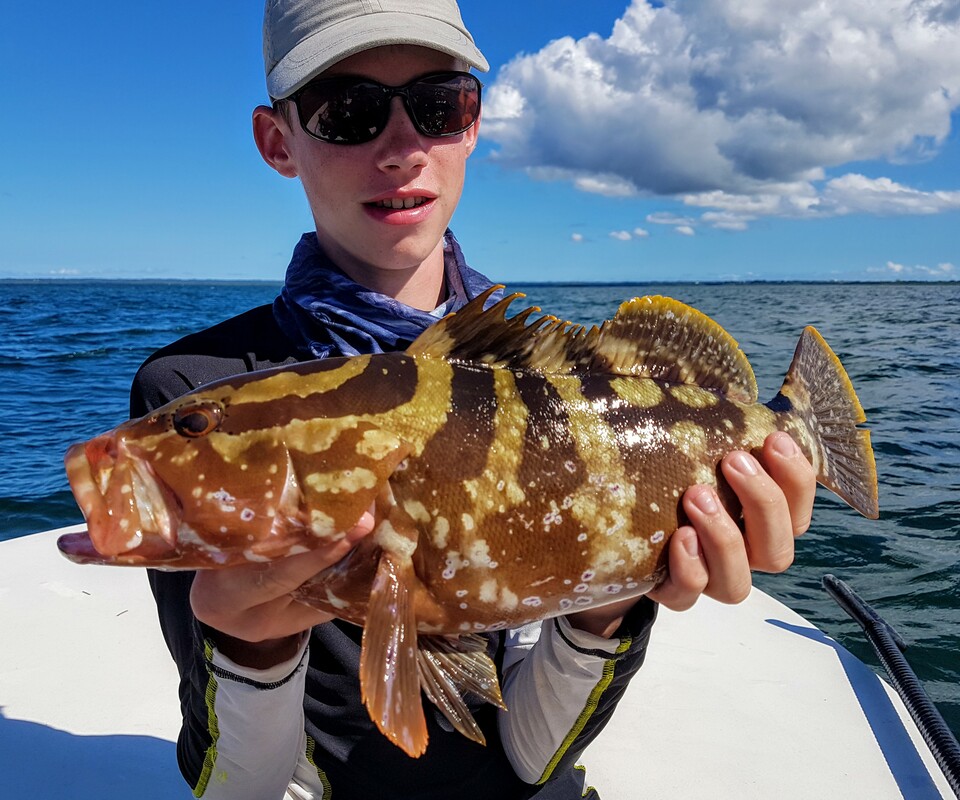
Rocky bottoms and coral sea beds is home for the groupers. Many species are classified as groupers in the Caribbean. They can be found in the lagoons aswell as in the open sea. Nassau groupers (epinephelus striatus), goliath groupers (mérou ‘grande gueule’) among others can be fished for on jigs or ‘scratching’ the seabed (bottom fishing). They are colourful fish with gorgeous different shades.
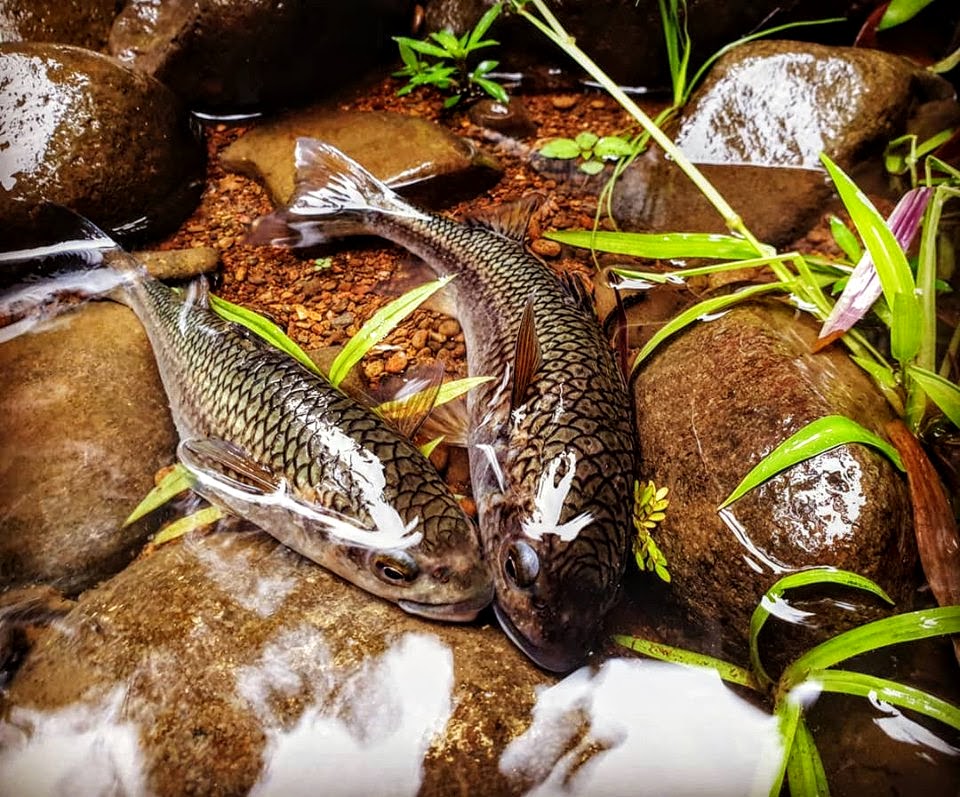
This endemic species that lives in schools can be found in nearly all the freshwater rivers in Guadeloupe. Mountain mullets are olive gold and they’ve got yellowish or orange fins. It’s fun to fish them on the fly or on little lures. They behave like chub or fario trout in our rivers. I’ll be happy to let you discover this great games partner.
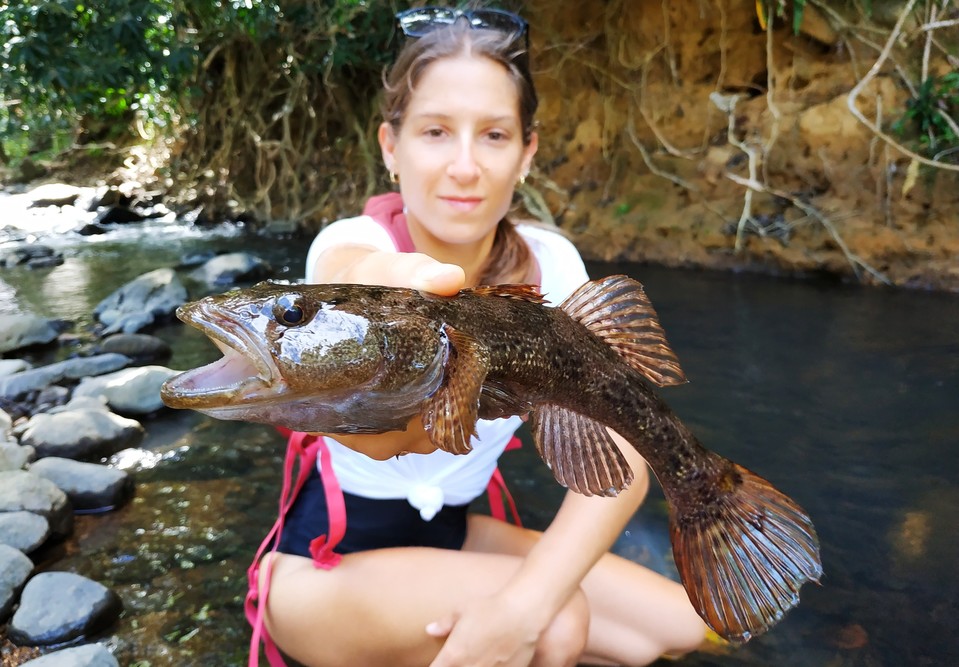
It is also a freshwater fish from Guadeloupe. ‘Dormeurs’ share their habitat with mountain mullets. They are voracious solitary predators. They can camouflage themselves very well in their environment and lurk at the bottom, waiting for an ambush. With its mouth wide open, it rushes to seize its prey on every occasion. If you manage to spot it, it’ll be quite easy to lure it on sight.
Discover Guadeloupe fish during my services :
Interested in an outing ?
Phone : (+590) 06 90 59 39 00
E-mail : julien.guidedepeche@gmail.com